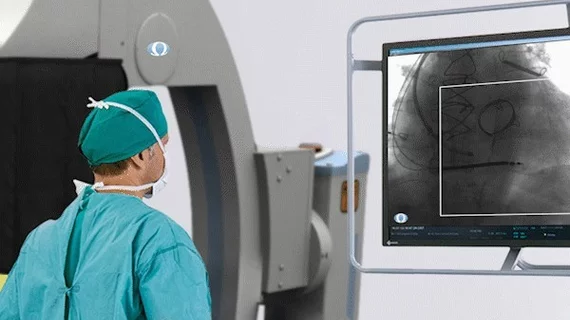Physicians performing fluoroscopy-guided procedures exposed to 3 times more radiation than colleagues
Physicians performing fluoroscopy-guided interventional (FGI) procedures must be more vigilant in minimizing their risk of occupational radiation dosage to the eyes, according to new research published in the Journal of Vascular and Interventional Radiology.
Though the U.S. has regulations on occupational exposures for medical workers, some of them have not been revised since 1991. This comes despite pleas from the International Commission on Radiological Protection (ICRP) and the National Council on Radiation Protection and Measurements (NCRPM).
Overexposure to ionizing radiation has known side effects, including cataracts, cancers and certain circulatory diseases. Therefore, the study of its long-term effects on medical staff who are frequently exposed is imperative.
“Large-scale studies designed to precisely evaluate the late effects of occupational radiation exposure to these workers have been severely limited,” David Borrego, PhD, with the Radiation Epidemiology Branch at the National Cancer Institute and National Institutes of Health, and co-authors wrote.
For the study, Borrego et al. provided annual dose reports for the years 2009, 2012 and 2015. A total of 169 records from 77 physicians, and 698 records from 455 non-physicians were included.
Physicians performing FGI procedures recorded a median dose equivalent three times higher than that of their non-physician colleagues. When accounting for variables, such as whether the physicians wore eye protection, the study revealed that up to 25% of physician doses might have exceeded 20 mSv annually.
Currently, the U.S. Standards for Protection Against Radiation say the annual occupational dose limit for the eye lens should not exceed 150 mSv. The IRCP and NCRPM have both recommended that the limit be lowered to not exceed 50 mSv per year.
The authors noted that although no one in the study exceeded recommended dose limits, there was an upward trend in overall exposure from year to year.
“Working in a high-dose radiation environment does not need to translate to a high occupational dose. Providing adequate and relevant training programs for all stakeholders in radiology departments can help establish a radiation protection culture,” the authors wrote.
You can read the detailed study in The Journal of Vascular and Interventional Radiology.

